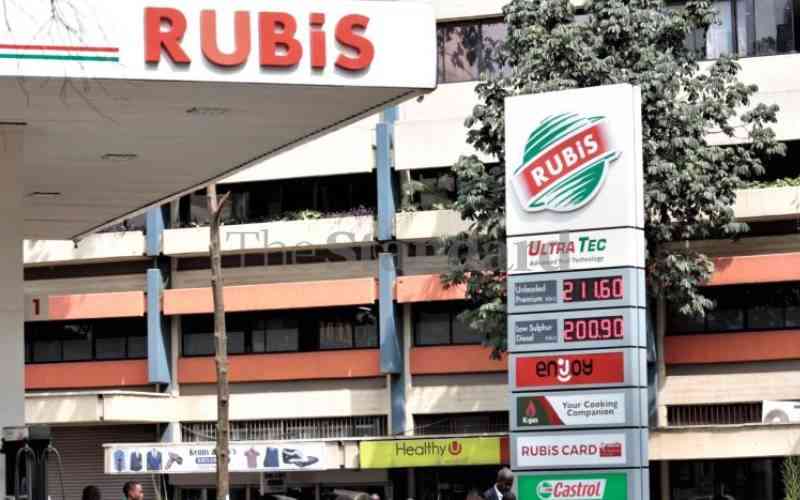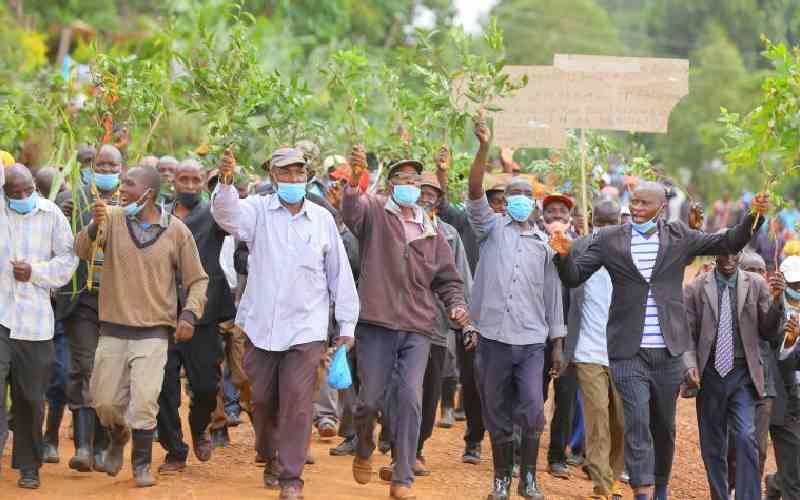Woolworths House went up in flames, barely four years ago. Did you take any lessons – at home, at work, everywhere? Except in the forest, fires don’t just happen. They are caused
Few of us remember the fire that threatened to gut down Kencom House in the heart of Nairobi in 1985. Fewer still know about the recurrent fires at the International House in 1979. Even far fewer know about them. Worse still is whether any lessons were taken from these fires. And were any lessons taken from the fire that destroyed Nakumatt in Woolworths House in the Central Business District of Nairobi, just a few years ago? Do we learn anything out of tragedy?
Before it became simply the “International House,” this building, straddling Mama Ngina Street and City Hall Way, was known as the “International Life House.” It lost its “Life” on account of the repeated fires in the late 1970s, as those of us who were of age will recall. The numerous foreign missions then housed there decamped. A cartoonist captured and expressed the irony of a house claiming to be a “life house” so recurrently bringing life under the threat of fire. Someone seemed to have decided that it should now just be the “International House.” Mercifully, the fires stopped.
In 1985, Ben Kipkorir was the Executive Chairman of the then Kenya Commercial Bank. The bank is today simply KCB. The name perhaps changed to gain the bank more regional accommodation. Kipkorir recalls the night when he was woken up at 1am to the news that Kencom House was literally on fire. Only that evening, he had presided over a function late into the night, in the Chairman’s penthouse atop the house. You can imagine his bewilderment at the untoward news.
Kipkorir has spared four pages of his autobiography, Descent from Cherang’any Hills: Memoirs of a Reluctant Academic (which I thought I was going to publish) to the blaze in Kencom House. He recalls how at some point, in the course of the firefighting, virtually everybody gave up. They stood there, the PC Fred Waiganjo, Nairobi Area Police Officer (later Police Commissioner) Philip Kilonzo, Dr Kipkorir himself and a few others, watching in despair as the fire raged.
He records: “The fire had apparently broken out in a room located at about the midpoint of the 7th floor. We never established the exact cause of the inferno, but surmised that it was probably caused by an electric kettle that someone had inadvertently left on. (Notice my emphasis). Try hard as they did, the firefighters could not gain access to the source of the fire because the main entrance to the corridor was secured by burglarproof steel. (Notice my emphasis, again). A detachment of Kenya Army firefighters, armed with oxygen masks, set out to break the gate, but were denied access by the intensity of the fire and smoke. Meanwhile, the Nairobi Fire Brigade’s browsers ran dry. Upon enquiry, I was informed that all the City Fire hydrants along the streets were also dry. (Again notice my italics).
Kipkorir captures the despair of the moment: “Apparently there was nothing more for any of us to do, but to stand by and watch the fire burn itself out. I thought then that we had lost everything.” Fortunately for them, however, there was Patrick Shaw, that mysterious and dreaded gentleman. Some of us remember him straddling Nairobi like the colossus. He drove in an old blue Volvo, scaring the hell out of gangsters with his multiple guns. It was this man who mobilised another fire engine from industrial area and eventually brought the fire under control and arrest.
Kipkorir concludes this narrative with the plaintive remark: “At a personal level, I was saddened by the utter absence of national civic capacity and coordination to deal with any emergency, such as a major fire. As I write these memoirs (published in 2009), the national institutional disability remains.”
You can read in his book all about the personal lessons that the former KCB Executive Chairman learnt from that fire and the measures he subsequently instituted to safeguard KCB buildings across the country from fire. You can also read about some of the foolish predisposing things that we do. This is especially in the cold season like now. Eventually, we can be so naïve and a danger to ourselves and others.
In the wake of the fire that has brought negative focus on East Africa’s premier city and airport this week, these are things to ponder. Woolworths House went up in flames, barely four years ago. Did you take any lessons – at home, at work, everywhere? Except in the forest, fires don’t just happen. They are caused. There is the forgotten electric kettle or cooker, the iron box in the office, the electric system nobody has checked for a decade, the faulty eclectic warmer – dozens of mindless things.
Is there need for office policy around the danger that is fire? We sit in bugler-proofed offices with our fire escapes blocked with cartons of useless things. We do not seem to know how to be rid off of the garbage in the cartons. There is broken furniture, ancient typewriters, carpets and stuff, blocking the fire escape. Then there are burglar proof doors, the locks of whose keys’ whereabouts nobody knows. The office assistant who last had those keys retired three years ago. Such is how the decent people of the city live – in constant mortal danger.
Woolworths House went up in flames on a weekend. The water hydrants in the city centre were dry. We heard the water had been diverted to the estates, because it was a weekend. I doubted. I still doubt. Jomo Kenyatta International Airport? Where are the smoke detectors that will trigger water to bathe you silly at the slightest detection of smoke? Where are the hydrants? Where are the youthful firefighters? This is not a task for the ageing and the aged.
Eventually, we must thank God for little mercies. The international safety and security rating of our foremost regional airport will drop. But we must thank God. We have not heard of any loss of life in this inferno. However, have we taken lessons?
The writer is a publishing editor, special consultant and advisor on public relations and media relations
Stay informed. Subscribe to our newsletter
 The Standard Group Plc is a
multi-media organization with investments in media platforms spanning newspaper
print operations, television, radio broadcasting, digital and online services. The
Standard Group is recognized as a leading multi-media house in Kenya with a key
influence in matters of national and international interest.
The Standard Group Plc is a
multi-media organization with investments in media platforms spanning newspaper
print operations, television, radio broadcasting, digital and online services. The
Standard Group is recognized as a leading multi-media house in Kenya with a key
influence in matters of national and international interest.
 The Standard Group Plc is a
multi-media organization with investments in media platforms spanning newspaper
print operations, television, radio broadcasting, digital and online services. The
Standard Group is recognized as a leading multi-media house in Kenya with a key
influence in matters of national and international interest.
The Standard Group Plc is a
multi-media organization with investments in media platforms spanning newspaper
print operations, television, radio broadcasting, digital and online services. The
Standard Group is recognized as a leading multi-media house in Kenya with a key
influence in matters of national and international interest.









